Appearance
Dark Light
Did You Know?
Conventional farmers use around 300 different pesticides to grow foods that are sold in supermarkets everyday.

Urban Gardening - 2021
Year two into the COVID-19 pandemic and still no respite; paranoia and fear lingered on in public places. My allotment garden remained open (which I was grateful for), but most gardeners seemed distant -- physically and socially; curt hello/good-bye became the norm. With all the shit that's been happening around the world and in our lives (pandemic or otherwise), gardening still provides solace and peace.
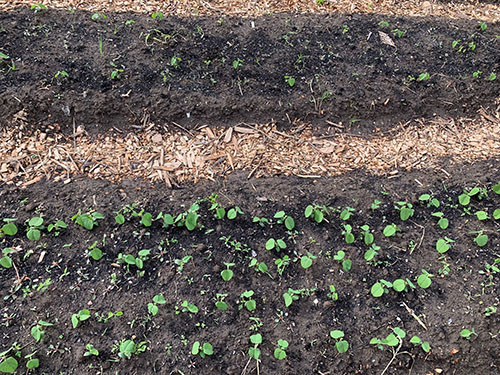
I usually save and keep a two-year supply of seeds, in case I get a bad batch of seeds or a total crop failure. The soy bean seeds that I saved from last year (2020) didn't germinate well. The top row was sowed with 2020 seeds, and had a germination rate of 10-15%. The bottom row used seeds from 2019, which still germinated well (over 90%). I usually sow seeds densely (more dense than recommended) then thin out the seedlings later. This year, instead of thinning, I transplanted the extra seedlings from the bottom row to the top row. The practice of saving/keeping more seeds than you need turned out to be useful.

Once the seedlings got established, both rows grew nicely. Soy bean is a great crop to grow; the dense, tall foliage controls weed growth and retains soil moisture. They're relatively low-maintenance and pest-free (except for Japanese beetles). They're also one of my highest yielding crops - two 4x12' rows can yield 30-40 lbs of soy beans.
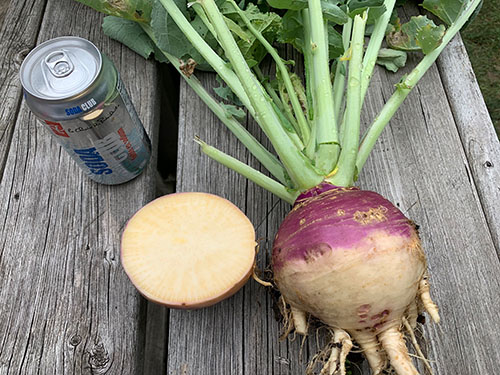
American Purple Top Rutabaga. I've never grown or eaten rutabaga before, so I decided to try growing it this year. Direct-seeded them outside in early April and harvested the first ones in July when they were the size of a soft-ball. Their leaves were bigger than expected and took up a lot of space. I made the mistake of planting them too close to the beets; they grew quicker and crowded out the beets. The leaves are edible and were fed to the chickens (more on the chickens later!). The root is pale yellow and has a mild, sweet taste and a texture similar to turnips. Tried making mashed rutabaga, but instead of using butter which most recipes call for, I used duck fat (which gave it a richer taste). I think I actually prefer it over mashed potatoes. It's also delicious roasted with a bit of salt & pepper.

Early Purple Vienna Kohlrabi. I've also never tried kohlrabi. Like the rutabaga, its leaves can get large - I planted them too close together not knowing this beforehand. This weird looking plant has a dark purple skin, with purple streaks running through the leaves. The flesh is pale yellow/white and mildly sweet, somewhat similar to cabbage. I tried cutting it into thin strips and stir frying it - makes a decent side dish.
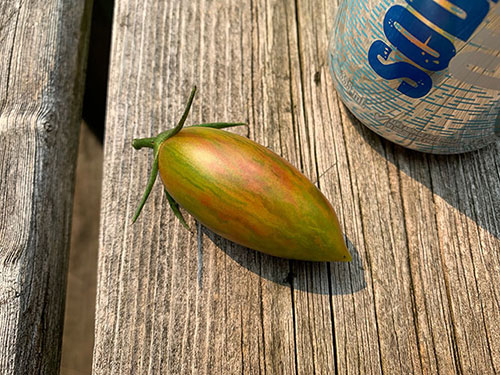
Lucky Tiger Tomato. I like trying out new varieties of tomatoes. This tomato comes in attractive, marbled shades of red & green and has a pleasant sweet & fruity flavor - great for snacking.
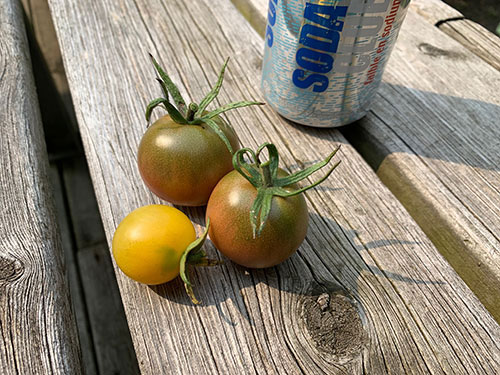
I had some huge, golfball-size Black Cherry tomatoes this year. I think they might have cross-pollinated with another variety of tomato (maybe Cherokee Purple?). The flavor was good, but milder (less sweet) than regular size black cherry tomatoes.
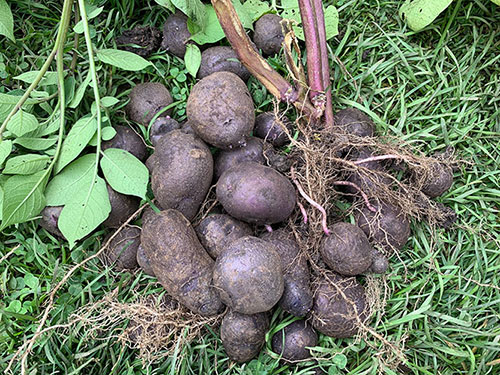
Russian Blue potatoes. I picked up a bag of seed potatoes at Lowe's (my local garden center) and planted them in March. They're cold-hardy; we were still getting snow & frost when they started sprouting, but they were fine. Harvested them in late July/early August.
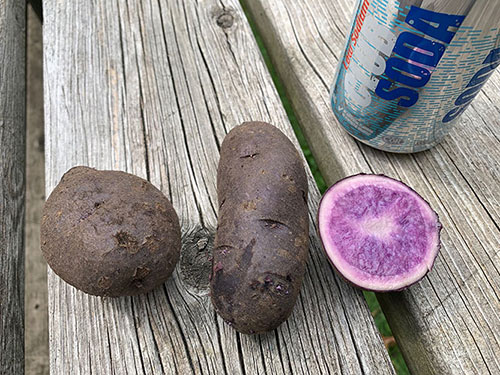
The potatoes were small (the largest were 4-5 inches in length). The flesh has a nice-looking purple/blue color (it turns deeper blue when cooked); it has a fluffy texture and good flavor (compared to store-bought regular potatoes). I tried just boiling it and adding a bit of salt. It was tasty and nutty - almost like chestnut.
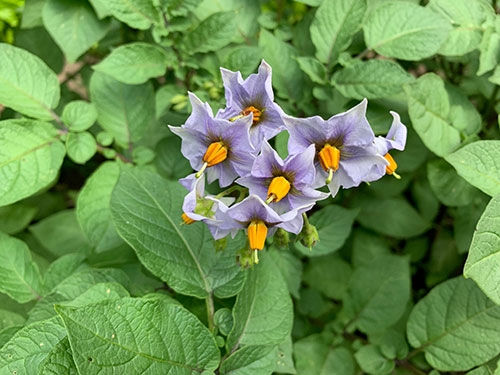
The potato plants had beautiful purple flowers, reminiscent of the resurrection flowers from the Netflix series Kingdom.
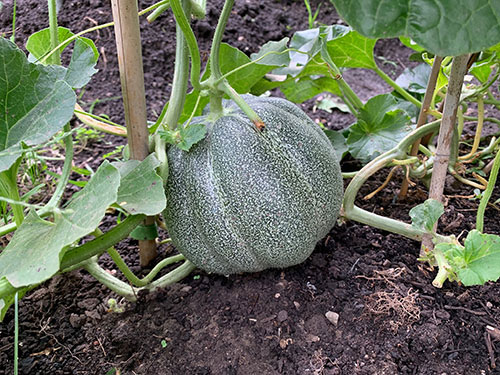
Petit Gris de Rennes Melon. I think the French name means: "small gray (melon) of Rennes (a city in northwest France)". I grew 3 plants and kept 2-4 melons per plant. Early in the season, the plants had many flowers, but no melons. I ended up pollinating the flowers by hand to get the melons to grow. The melon weighs 1-3 lbs and has a gray-green rind, which turns yellow when ripe.
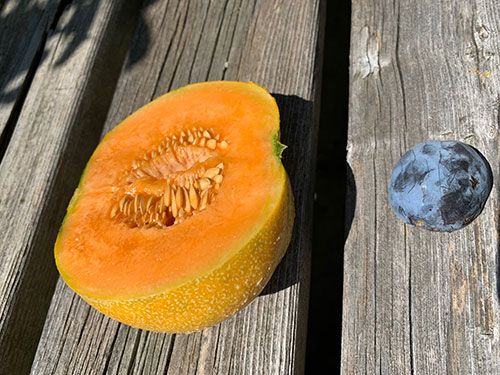
When ripe, the melon is sweet and juicy, with a fruity fragrance. Probably the best melon I've ever tasted. I thought supermarket cantaloupes were okay before, now they seem flavorless in comparison.
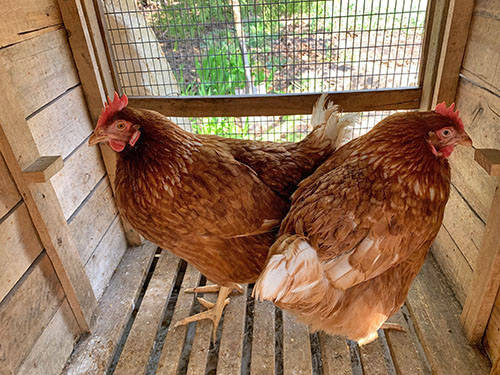
I picked up 4 chickens from a seller on Kijiji. I think the last time I raised chickens in my backyard was back in 2015. Chickens are awesome; besides providing fresh eggs, their manure also makes good fertilizer. The fermented manure smells horrible though, so I had to wait until my neighbours weren't around before I could apply it to the soil. One of the chickens was smaller than the others. When it came to feeding time, the big chickens would bully the small chicken (by pecking its feathers) to get first dibs on the food. I guess this is where the expression "pecking order" comes from. I fed them grains (rice, wheat berries), greens from the garden, and kitchen/food scraps (mixed with crushed oyster shells as a calcium supplement for harder egg shells).

One of the chickens laid a tiny egg - it had no yolk inside. I got 1-2 eggs per day, on average.
